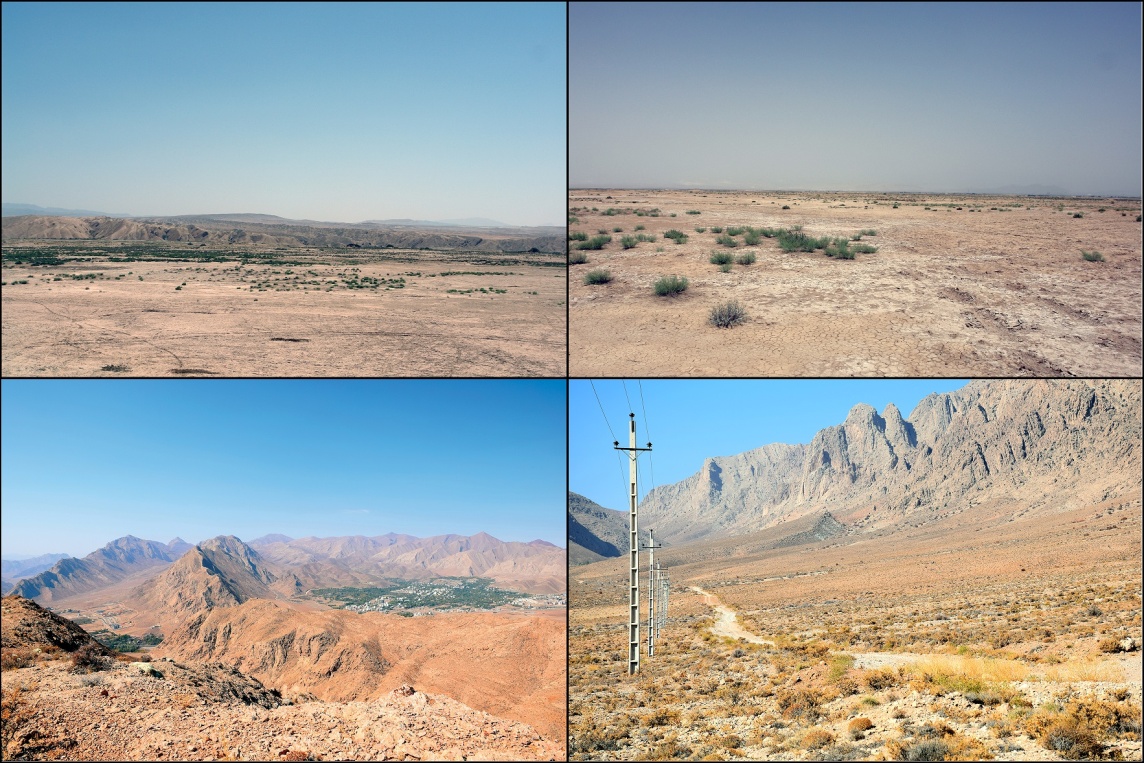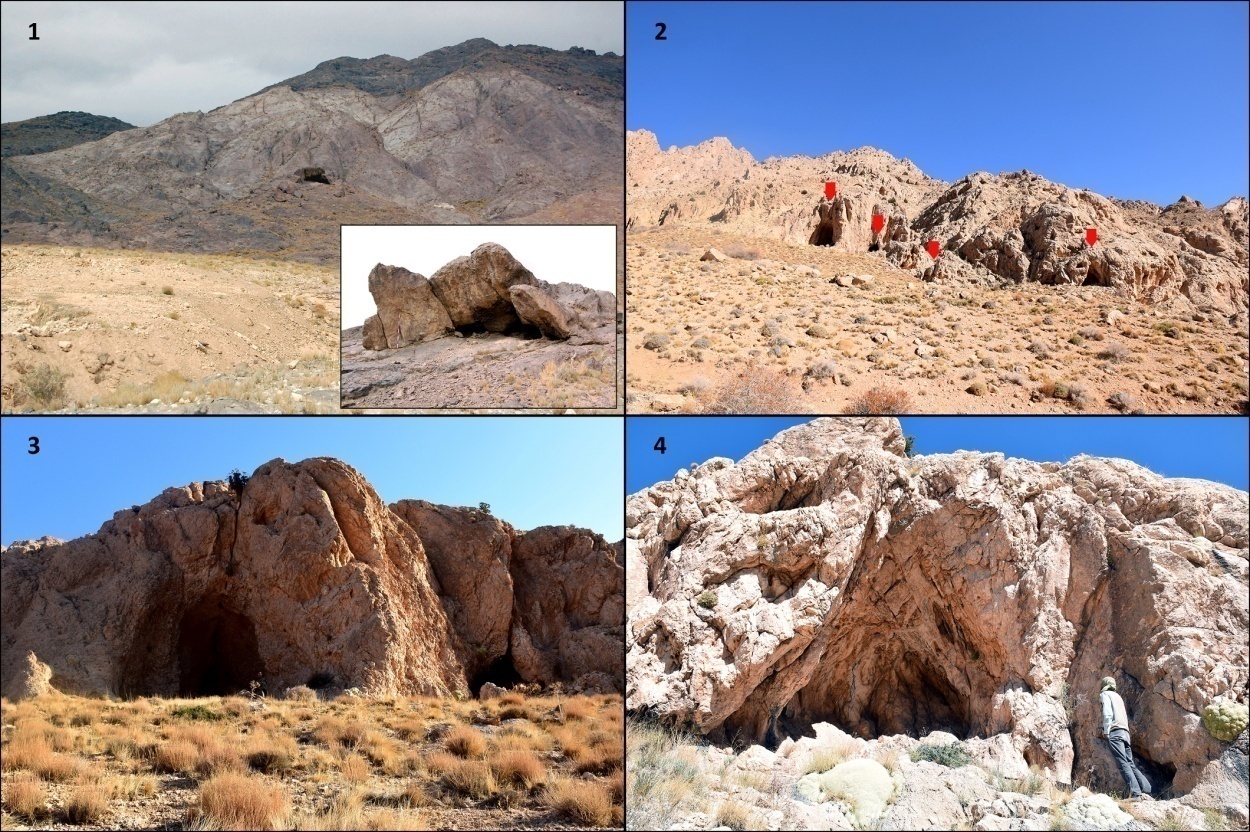-
Paper Information
- Paper Submission
-
Journal Information
- About This Journal
- Editorial Board
- Current Issue
- Archive
- Author Guidelines
- Contact Us
Archaeology
p-ISSN: 2332-838X e-ISSN: 2332-841X
2019; 7(1): 1-5
doi:10.5923/j.archaeology.20190701.01

Anzo: The First Evidence of Paleolithic Cave Sites in the Northern Margin of the Iranian Central Desert, Semnan, Iran
Mozhgan Jayez 1, Seyyed-Milad Hashemi 2, Asghar Nateghi 3, Alieh Abdollahi 3, Mohammad Akhavan Kharazian 4, Hamed Vahdati Nasab 2, Gilles Berillon 4
1Research Institute of Cultural Heritage and Tourism (RICHT), Iranian Centre for Archaeological Research (ICAR), Tehran, Iran
2Tarbiat Modares University, Tehran, Iran
3Islamic Azad University of Central Tehran Branch, Tehran, Iran
4UMR7194 CNRS-MNHN-UPVD, Joint French and Iranian Palaeoanthropological Project (FIPP), Musée de l'Homme, Paris, France
Correspondence to: Mozhgan Jayez , Research Institute of Cultural Heritage and Tourism (RICHT), Iranian Centre for Archaeological Research (ICAR), Tehran, Iran.
| Email: |  |
Copyright © 2019 The Author(s). Published by Scientific & Academic Publishing.
This work is licensed under the Creative Commons Attribution International License (CC BY).
http://creativecommons.org/licenses/by/4.0/

The archaeological survey of the southern foothills of Alborz Mountains was conducted in search of caves and rock shelters with Palaeolithic remains. The region under investigation in Semnan Province is located in the northwestern margins of Dasht-e Kavir in Iranian Plateau. It was investigated primarily in 1980s and 1990s by Iranian archaeologists. From 2009, The Paleolithic Survey of the Iranian Central Desert Project (PSICDP) was established in order to evaluate the Paleolithic potential of the region, as a result of which Palaeolithic sites were documented and their surface collections were published. The current survey was conducted as a part of PSICDP project in autumn 2017. As a result, 12 caves and rock shelters were recorded, despite the promising condition of which only one had evidence from Palaeolithic Period. Anzo Cave, in northwest of Mehdishahr, was the only cave which yielded few number of chipped stones on the outer slope of the cave. The results of this survey raise the possibility that movement patterns of Palaeolithic hunter-gatherers in the region included seasonal-vertical movements between mountainous area in the north and southern lowlands. Recent discovery of Anzo Cave re-emphasizes the significance of the region as a part of migratory pathways during the Pleistocene.
Keywords: Paleolithic, Hunter-gatherers, Iranian Central Desert, Pleistocene
Cite this paper: Mozhgan Jayez , Seyyed-Milad Hashemi , Asghar Nateghi , Alieh Abdollahi , Mohammad Akhavan Kharazian , Hamed Vahdati Nasab , Gilles Berillon , Anzo: The First Evidence of Paleolithic Cave Sites in the Northern Margin of the Iranian Central Desert, Semnan, Iran, Archaeology, Vol. 7 No. 1, 2019, pp. 1-5. doi: 10.5923/j.archaeology.20190701.01.
1. Introduction
- Although most of the Paleolithic research in Iranian plateau has been concentrated in the Zagros Mountains (see for example Biglari and Shidrang, 2016; Coon, 1951; Hole and Flannery, 1967; Otte et al., 2007; Shidrang, 2014; Solecki, 1963), recent surveys and excavations conducted by the Iranian-French team suggest that northern edge of the Iranian Central Desert has been a part of one of the several migratory pathways (“corridors”) of Pleistocene hunter-gatherers since at least the Middle Paleolithic (see Figure 1; Vahdati Nasab et al. 2013). The northwestern margin of Dasht-e Kavir was investigated primarily in 1980s and 1990s (Mehryar and Kabiri 1986; Rezvani 1999). From 2009, The Paleolithic Survey of the Iranian Central Desert Project (PSICDP) was established in order to evaluate the Paleolithic potential of the region. As a result of the project open air sites including Mirak (MP and UP, Rezvani and Vahdati Nasab 2010; Vahdati Nasab et al. 2013), Delazian (UP-EP, Vahdati Nasab et al. 2010; Vahdati Nasab and Clark 2014), Soofi-Abad (Vahdati Nasab and Feiz 2014) and Chah-e Jam (Vahdati Nasab and Hashemi 2016) were surface sampled and one of them (Mirak) was undergone three consecutive excavation (2015-2017) by the Iranian-French Paleolithic mission (FIPP).
 | Figure 1. Migratory pathways on the Iranian Plateau (reproduced from Vahdati Nasab et al. 2013) |
 | Figure 2. Paleolithic open air sites of northern margin of Iranian Central Desert and location of Anzo Cave |
 | Figure 3. Various ecological landscapes in the southern piedmont of the Alborz Range and the northern edge of the Central Desert |
2. Survey and Results
- The focus of the survey was on the junction between the foothills and the valleys or plains which provides the most probable locations of caves and rock shelters. Based on the preliminary reconnaissance from maps and exploring local tracks in vehicle, the mountainous area in northwest and northeast of Mehdishahr County was chosen for a combination of intensive on-foot survey.As a result, 12 caves and rock shelters were recorded, despite the promising condition of which only one had evidence of Paleolithic occupation. Due to the importance of recording all background information and observations made during the course of the survey, even those caves and rock shelters which failed to yield Paleolithic finds were recorded (Figure 4).
 | Figure 4. Caves and rock shelters recorded in Mehdishahr region which failed to yield Paleolithic finds (1. S1701; 2. Litho Rock Shelters complex (S1708-S1711); 3. S1711; 4. S1708) |
 | Figure 5. Anzo cave entrance near the quarry facilities (view from the southeast) and cave plan and section with the location of the clandestine pit |
 | Figure 6. Chipped stones from surface collection of Anzo Cave |
3. Conclusions
- Northern margin of the Iranian Central Desert had already been introduced as a part of dispersal corridors of early hominin range extensions from source populations in East Africa (see Vahdati Nasab et al. 2013). The corridor, which is a pass between the southern piedmont of the Alborz Range and the northern edge of the Central Desert, was introduced only by open air sites, but the results of this survey not only reveals the first evidence of cave sites in the region, but also raise the possibility that movement patterns of Paleolithic hunter-gatherers in the region included seasonal movements between mountainous area in the north and southern lowlands. For investigating such a hypothesis further surveys in both areas are required and systematic excavations are planned. The Paleolithic evidence from Anzo Cave, although limited, indicates the extended territory, through which mobile hunter-gatherers of the Paleolithic Period moved, was not limited to the lowlands but included the mountainous region in northern margins of Central Iranian Plateau as well.
ACKNOWLEDGEMENTS
- We thank Dr. Hamideh Choubak and Dr. Behrouz Omrani, the directors of ICAR for funding and granting us the permit at the time of the field work. We also thank Mr. Khajeh Beidokhti, the director of the Iranian Cultural Heritage Organization office in Semnam and his colleagues for providing ideal conditions to conduct the fieldwork. We are also grateful to Mohammadreza Rokni for helping us regarding maps and satellite images.This mission was co-funded Joint French and Iranian Palaeoanthropological Project (FIPP) (grant of the French Ministry of Europe and Foreign Affairs).
 Abstract
Abstract Reference
Reference Full-Text PDF
Full-Text PDF Full-text HTML
Full-text HTML